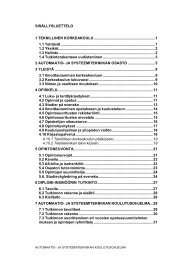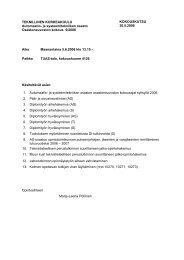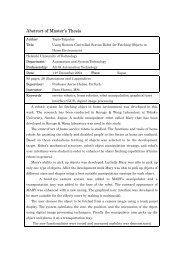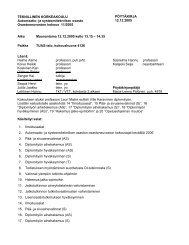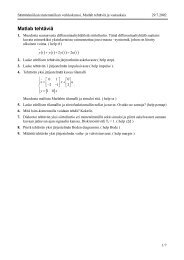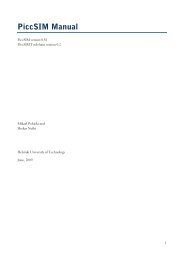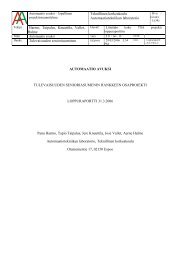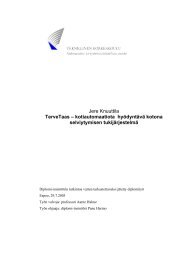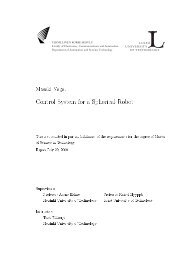fem modelling of a bellows and a bellows- based micromanipulator
fem modelling of a bellows and a bellows- based micromanipulator
fem modelling of a bellows and a bellows- based micromanipulator
Create successful ePaper yourself
Turn your PDF publications into a flip-book with our unique Google optimized e-Paper software.
FEM <strong>modelling</strong> <strong>of</strong> a <strong>bellows</strong> <strong>and</strong> a <strong>bellows</strong>-<strong>based</strong> <strong>micromanipulator</strong>III. ModellingThe bending δx is very small, only a few micrometers, which is not very significant. So thesimulation has been repeated several times more, with various bending forces, <strong>and</strong> always thesame upshot is observed.The bending parameter Q is determined next. The bending value δx at step 3 – without anyinternal pressure – is taken into account, because it varies less than 0,72% on the wholepressure range. Equation (3.7) implies:3F ⋅lQ =3⋅δx( 18.8)50⋅=3⋅1.3353= 83.27·10 3 [mN·mm 2 ] (3.12)Next diagram shows the bending-angle α at the top <strong>of</strong> the entire <strong>bellows</strong>, for the same50 [mN] bending force. The angle doesn't need any correction, because there is no differencedue to the growth <strong>of</strong> the <strong>bellows</strong>.z -rotation [°]5.525.505.485.465.445.425.405.385.36Angle α at the top <strong>of</strong> the entire <strong>bellows</strong>Constant bending Force F = 50 [mN]0 20 40 60 80 100Pressure [mN/mm 2 ]To check the correctness <strong>of</strong> the found Q parameter, let's see if equation (3.8) gives the samebending angle as the simulation.( 18.8)22⎛ F ⋅l⎞ ⎛ 50⋅⎞α = arctan⎜−⎟ = arctan⎜⎟−= 6.06º (3.13)3⎝ 2⋅Q⎠ ⎝ 2⋅83.27⋅10⎠This calculated value is 9% <strong>of</strong>f to the value given by the simulation – which was 5.5º. Thisvery small mismatch corroborates that the beam-model can be used to simulate the complete<strong>micromanipulator</strong> later. It also confirms that previously suggested way to calculate thebending δx <strong>of</strong> the entire <strong>bellows</strong> is correct.Let's calculate now the same Q parameter <strong>and</strong> α angle, with those results directly generatedby ANSYS ® for one lone ring, without any data manipulation:3F ⋅lQ3⋅δx<strong>and</strong>−13( 8.128⋅10) =50⋅=3⋅9.6554⋅10=−592.689·10 3 [mN·mm 2 ] (3.14)−12( 8.128⋅10) ⎞⎟ =2⎛ F ⋅l⎞ ⎛⎜ 50 ⋅α = arctan⎜−⎟ = arctan −0.00102º (3.15)⎝ ⋅ ⎠⎜32 Q⎟⎝2 ⋅92.689⋅10⎠29



